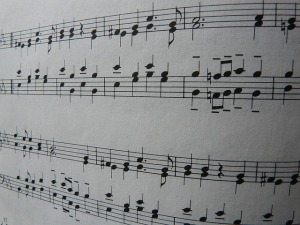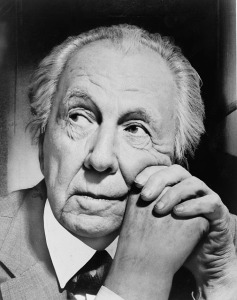 Who are you? Where are you going? Where have you been?
Who are you? Where are you going? Where have you been?
As a boy I realized that Socrates’ advice that everyone in the Western world has heard at least five or six times–“Know thyself”–was no less difficult than to walk from my porch to the moon. But I know now that if we look carefully at where we have been, who we have known, what our life’s events from the earliest days have meant to us, and where we are going, we can in fact satisfy Socrates and know ourselves. This is a goal that is particularly important to creative people because their work is an exact reflection of the remarkable men and women their lives have made them.
Your Ground Plan
It is a biological concept that applies very much to artists and artists’ development: everything that grows—a rose, an eagle, a human being– has a life plan, a ground plan, and a life structure. All parts of this structure have a time to emerge that when complete form a unified identity, in our case, they come together to form the identity “artist,” and more specifically a type of artist: novelist, violinist, classical pianist, jazz pianist, movie composer, stage actor, ballet dancer, modern dancer, etc. That ground plan leads either directly in a straight line or in a roundabout helter-skelter way to that identity, but lead to it, it does. There is an order to our past, present, and future lives, however disorderly and unconnected they may seem.
Frank Lloyd Wright, America’s most renowned architect, knew from his earliest days that he would be an architect. When he was a child his mother told him he would, considering architecture man’s crowning achievement, and began to mold him to that art by placing illustrations of architectural masterpieces on his bedroom walls and encouraging him. And prodigies, Mozart, dancer Vaslav Nijinsky, Broadway composers Marvin Hamlisch and George Gershwin, and trumpeter Miles Davis among innumerable other artists followed a “neat and tidy” development, and knew as children precisely what their adult life’s pursuit would be. There could be no doubt. Novelist Henry James and his philosopher/psychologist brother William were raised with one objective in mind: to make them creative geniuses, and that’s what they became.
However, many successful artist’s ground plans follow a less neat and tidy, “messy,” meandering path, as in the cases of painters Vincent van Gogh (failed teacher, failed preacher, failed everything who yearned to find his true calling—and did at thirty-three when he was told he was starting too late), and Paul Gauguin (former affluent stock broker who abandoned his family to paint), and novelists Sherwood Anderson (successful business owner who also abandoned his business and family to write),Joseph Conrad (sea captain), and Henry Miller (telegraph office worker), and playwright Eugene O’ Neill (ship’s deck hand, grave digger, and aimless ne’r-do-well). The meandering path is typical of many artists as they experience hits and misses, successes and failures, victories and defeats, false starts and detours over and over. Straight or roundabout, tidy or messy, the artist’s ground plan is in effect and leads to his/ her being an artist and being recognized as such. There is not one best way to become a successful artist—writer—performer, etc. But there are any number of perfectly fine ways.
Has your creative ground plan been tidy or has it been messy?
La Grande Ligne
Out of the mass of experiences of his life, the artist (1) must somehow or other settle on an art and way of life that fits him; (2) must have the personal makeup necessary to excel in the art; must possess the (3) knowledge, (4) drive and persistence, (5) confidence and (6) complement of skills necessary to excel, and must (7) further develop strengths along certain clear lines.
 La grande ligne (“the long line”) is a term in music that means simply that every good piece of music gives the audience a sense of flow, of continuity from the first note to the last. That continuity and flow is the challenge and be-all and end-all of every composer’s existence. Every artist’s life—every painter, writer, actor, dancer–whatever his/her chosen art, has a grande ligne, a flow from beginning to end. All of the artist’s choices and goals should be understood as relating to their ground plan, whether the artist is or isn’t aware of that fact.
La grande ligne (“the long line”) is a term in music that means simply that every good piece of music gives the audience a sense of flow, of continuity from the first note to the last. That continuity and flow is the challenge and be-all and end-all of every composer’s existence. Every artist’s life—every painter, writer, actor, dancer–whatever his/her chosen art, has a grande ligne, a flow from beginning to end. All of the artist’s choices and goals should be understood as relating to their ground plan, whether the artist is or isn’t aware of that fact.
A number of components must come into alignment to result in a unity of direction and purpose of a person’s life, and certain steps must be followed. The components making a business woman are different from the components that work together to make a diplomat or a baker. Artists have alignments of components of a certain characteristic type–many personal qualities, interests, motivations, values, abilities, experiences, and other components. If just one component is missing, you no longer have a painter, sculptor, writer, or dancer. Everything must be present.
Life History Process
A way to acquire a clear view of your life’s “long line” is to come to understand: yourself as you are at this moment; the relationship between the person you are now and the days and years of your past life; how you conceive of your whole life; what happened in your life—what events meant to you and what they mean to you now. And to answer the question, “What am I trying to do as a human being, and as a creative person?”
- Divide your life into periods, such as:
Birth-15 years
15-25
25-45
45-65
65-
- Recall key EPISODES from those periods, period by period—“When I was six this happened to me. It was very important because it introduced me to music…” “At twenty-three I had a gig at a local bar and met an agent at a party…” “At thirty I started to dabble with bright colors…” Very often an episode occurs when the artist’s existence seems to be organized and focused toward the art and he has a premonition that from that point forward the art will be prominent in his life. Your entire life is a drama composed of the total number of significant episodes. Looked at closely and objectively, they reveal larger plots and themes. Right now, even without much thought, what particularly meaningful episodes come quickly to mind?
Episode 1
Episode 2
Episode 3
Episode 4
Methods that can be used to help you recall key episodes include discussions with relatives and friends, looking at report cards, documents, and records, and at your products—stories, drawings, compositions, paintings, performances. Photo-history is a method that involves looking at photographs to stimulate your memory. Assemble photographs from your life. Put the photos in chronological order; look at one at a time; ask about the photos—when was it, where was I, who are those people, what was happening?
Looking closely at individual episodes, ask: “What was I trying to do?” “Who was I?” “What was I learning?” “How was I changing?” “Was something leading me in the direction of my future work—an experience, a teacher, a success, a failure?” How did everything contribute to your becoming who you are? When did your artist’s, writer’s, or actor’s ground plan start taking shape? How did it begin? Through what ups and downs did it lead you then?
You may wish to write an autobiographical narrative about important episodes as I do with my “Growing Up” stories—direct statements of what happened when. When you do, memories buried deep in your mind will come flooding back, and you will remember what was happening and how you were feeling. Memories—particularly of childhood–are a main source of a creator’s inspiration. Author Thomas Wolfe’s ambition was to describe everything he had ever experienced. Author John Updike said that nothing that happens to you after the age of twenty is worth writing about. Personal motifs begun earlier in life stay with the artist throughout life and are reflected again and again in everything he or she produces. These themes cannot be avoided; they are the artist’s DNA. Artists accumulate experiences, people, places, key episodes, and ideas which they will draw on the rest of their lives, endlessly recapitulating them in their work. He/she never forgets them. These are the origins—and the content– of their craft.
- When reflecting on episodes think about:
Your characteristics; your personality at the time
Your abilities
Your needs
Your ambitions and dreams
- Look at the episodes for times in your life of shifts and changes of direction—crises, periods of trouble and distress, great pleasure, and achievements. Look for the choices you made and how you dealt with their consequences. What did the choices mean to your life?
- Sift through episodes for MAJOR THEMES. Your life has been a route of recurring themes, like those in a musical composition or a novel. For author Ernest Hemingway the themes of danger, of war, of adventure. Chagall’s Hasidism. Themes help explain many events in a person’s life and show continuity. Themes are groups of episodes that fall into a type.
What do you think right now, without much reflection, are your significant life’s themes?
My major themes are childhood, family, the place where I grew up, growing in understanding.
Theme 1
Theme 2
Theme 3
Theme 4
Bearing the major themes you’ve found in mind, ask yourself:
“Where do I seem to be headed? Where does it appear my grande ligne will lead me now?”
“What have I learned about myself from reflecting on my life and my artistic career?”
“What more do I want out of my painting, my dancing, my writing, my acting? What more can I give to it?
“Where do I want to be headed from this day on?”
© 2015 David J. Rogers
For my interview from the international teleconference with Ben Dean about Fighting to Win, click on the following link:
Order Fighting to Win: Samurai Techniques for Your Work and Life eBook by David J. Rogers
or
Order Waging Business Warfare: Lessons From the Military Masters in Achieving Competitive Superiority
or



You know I love this kind of post 🙂
The grande ligne…I love that. It was interesting to look over my life in this way, although of course it it is not the first time nor the last I dare say that I should mine my life in this way.
The main themes in my life, off the top of my head, are family, community, a search for meaning and connection (or belonging). Pretty much everything I do and write illustrates my search for meaning, and the themes of family, community and connection are what I use to illustrate that.
The first 15 years I wrote and read like a mad thing. 15 – 25, well damned if I didn’t get really confused, trying to figure out what I should be doing. From 25-35 I was really exploring family and community and now, from 35-45 it seems to be all pulling together. Finally 🙂 I wished for one of those lovely neat lives (isn’t it funny how they just kind of did what their parents said and it all worked for them? It didn’t work so well for me unfortunately, although i don’t believe anything was wasted.) great food for thought David xo
LikeLike
Sara, I loved your comments that allowed me to learn more about you. You seem to me to be very aware of where you’ve been and where you are now. Where do you think you’re headed? I’d like to hear more about that. It’s kind of great, and I agree, that nothing is wasted. I’ve had some bad times in my life, but I never bemoaned them and have always felt I benefited. I think it would have been interesting to know you during 0-15 and 15-25 especially, because those young days are often the days we draw on in our art. Thanks again for the comment and always responding to my blogs. I appreciate that a lot.
LikeLike
David, I found this post captivating to the senses, not only do you use the visual analogy of a rose, but you also present us with auditory concept of La Grande Ligne – very lovely, thank you!
LikeLike
Michelle, I want you to know that I go out of my way to use the word “rose,” and that when I do, I think of you. I too love the concept of La Grande Ligne. I think it operates in all art and I think you will be able to tell me more about how it applies to painting. I’d be very interested in that. Your grande ligne included a great trial which you survived and through your revelation, elevated into lovely art that is there for everyone to see. Hope to hear from you soon.
LikeLike
The symphony starts before the brush hits the canvas, the idea emerges, sometimes like a horn fanfare and sometimes as a lilting melody in the background, the underpainting builds a foundation like a series of chords and the rhythm is set. Adding colour can come like a flurry of notes from the back of the orchestra building to a crescendo as the piece comes into being. That lilting melody may return as the piece is finessed, but all of a sudden in a crash of cymbals the painting is finished and the conductor lays down his baton.
LikeLike
What a lovely description of the artistic process. You are not only a wonderful painter, but a wonderful poet as well. I’m glad I have your comment because I plan to read it from time to time. Thanks, Michelle.
LikeLike
I love your article about The Life Path of Artists and Writers. If you are interested about numerology. Here is a numerology calculator for your name. http://www.numerologycentral.com/calculator/
LikeLike
Adam, I’ve had no exposure to numerology before, but I went to the website you sent and found the description of me exactly right. It was kind of amazing. Thanks for it. And thanks for your interest in the article. I hope you come back to my blog again and comment again.
LikeLike